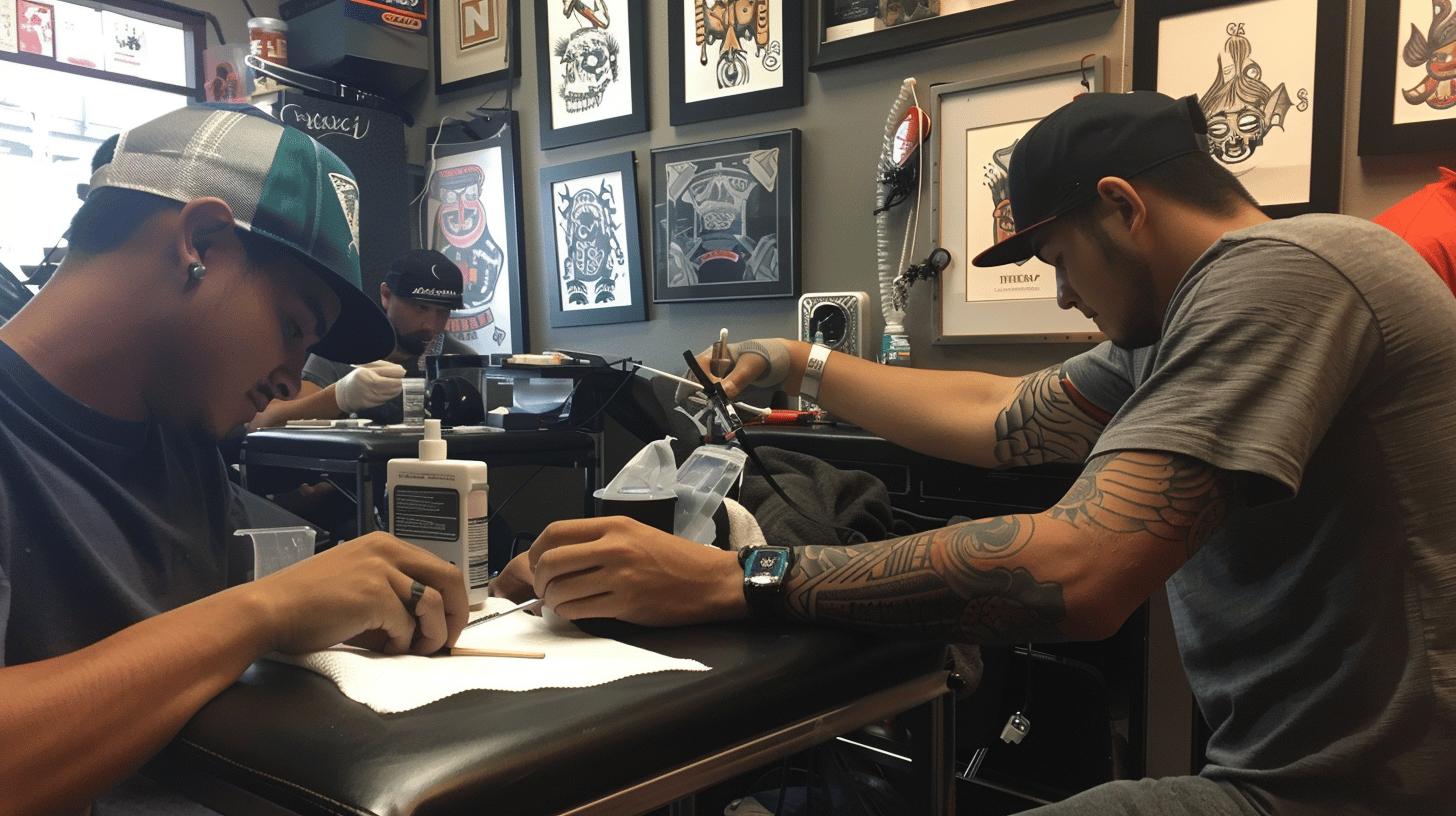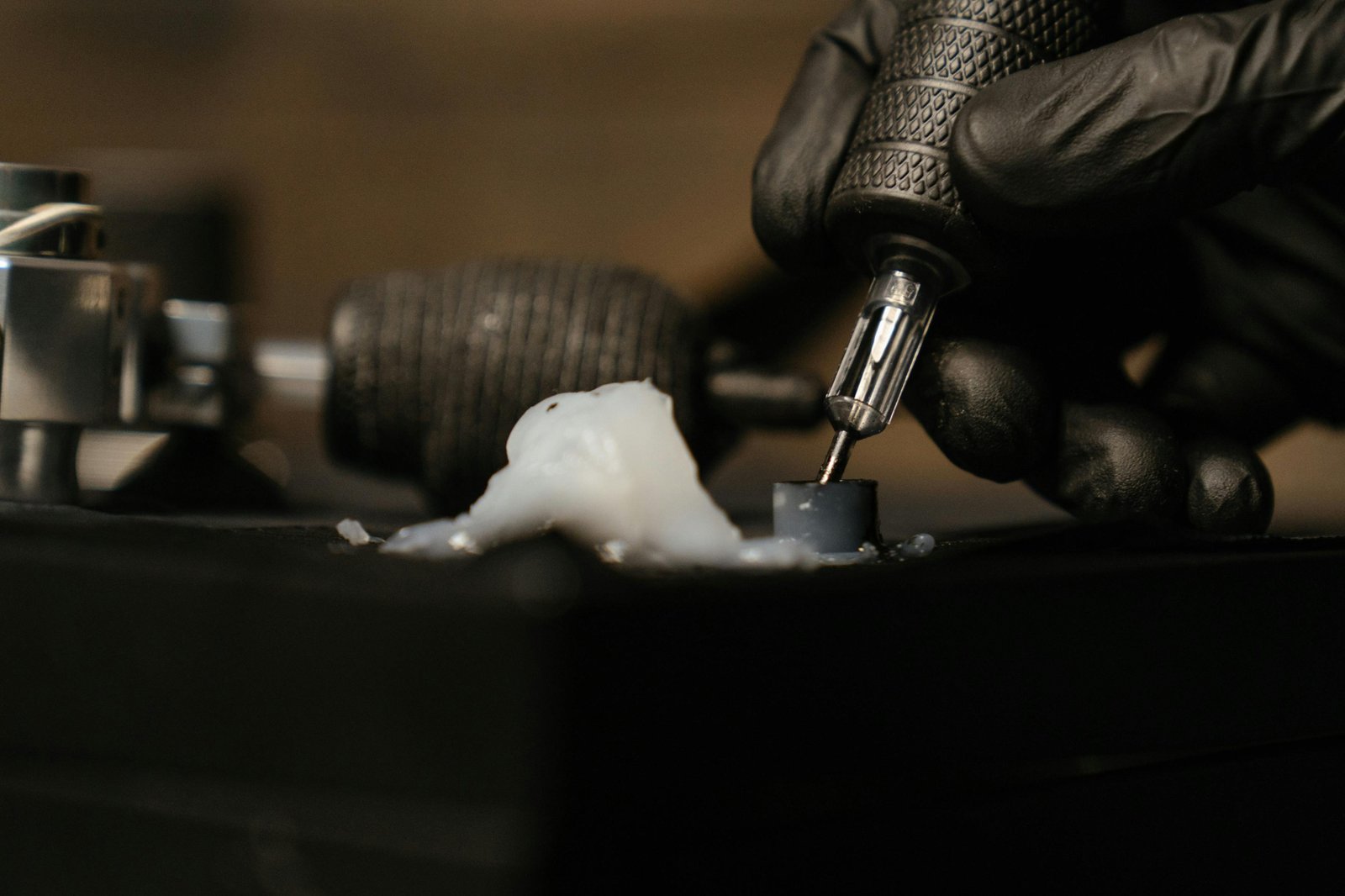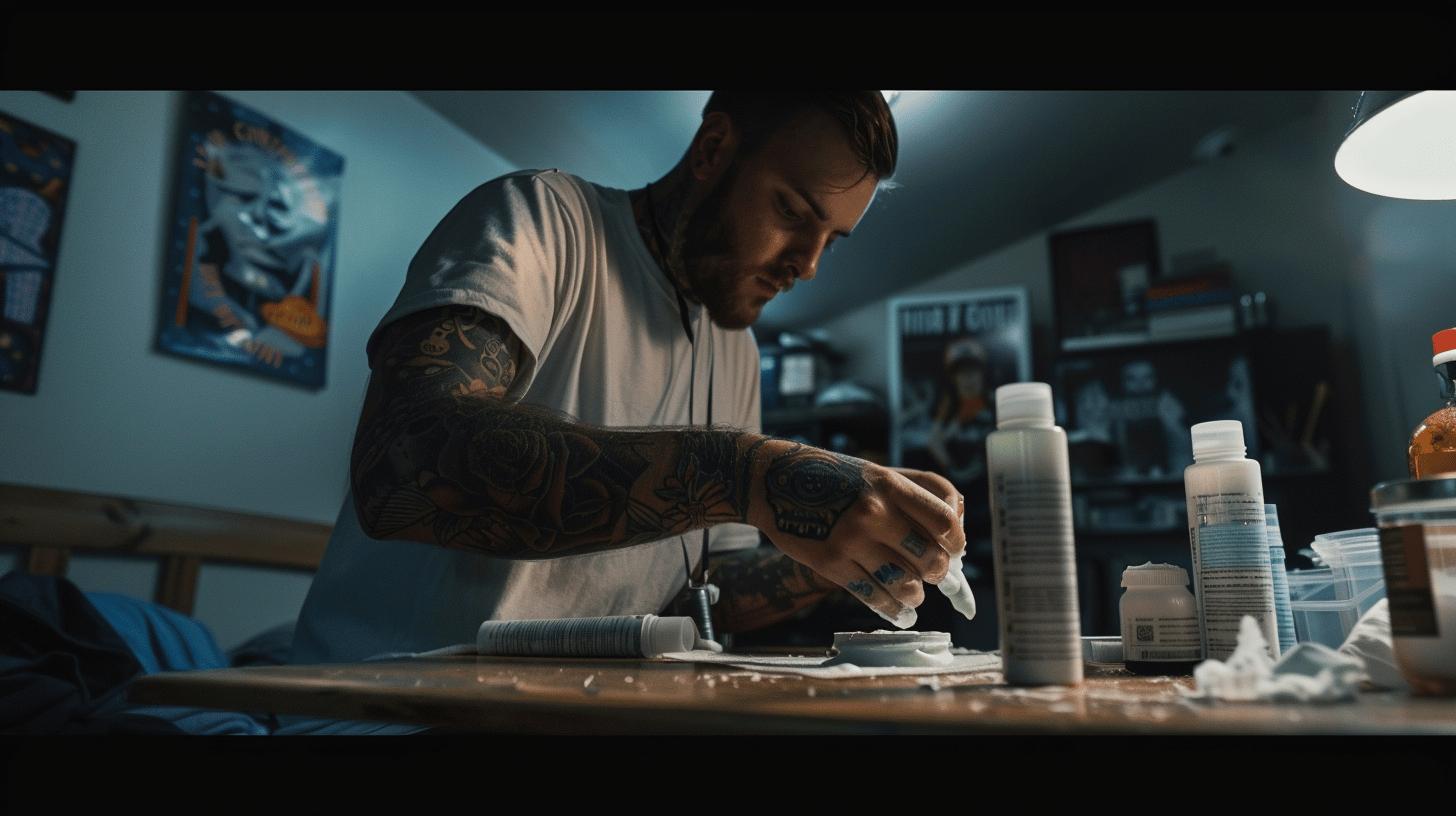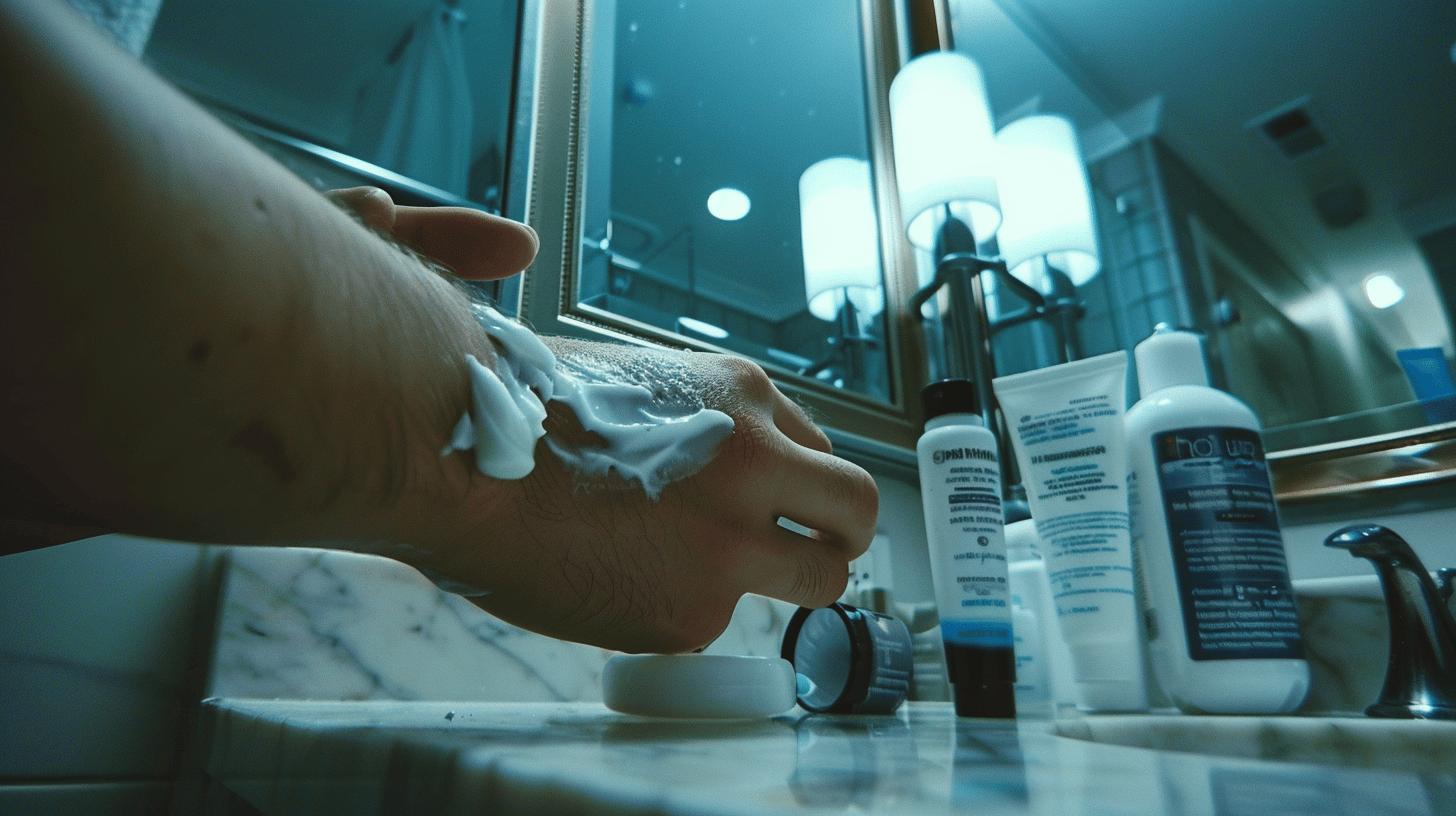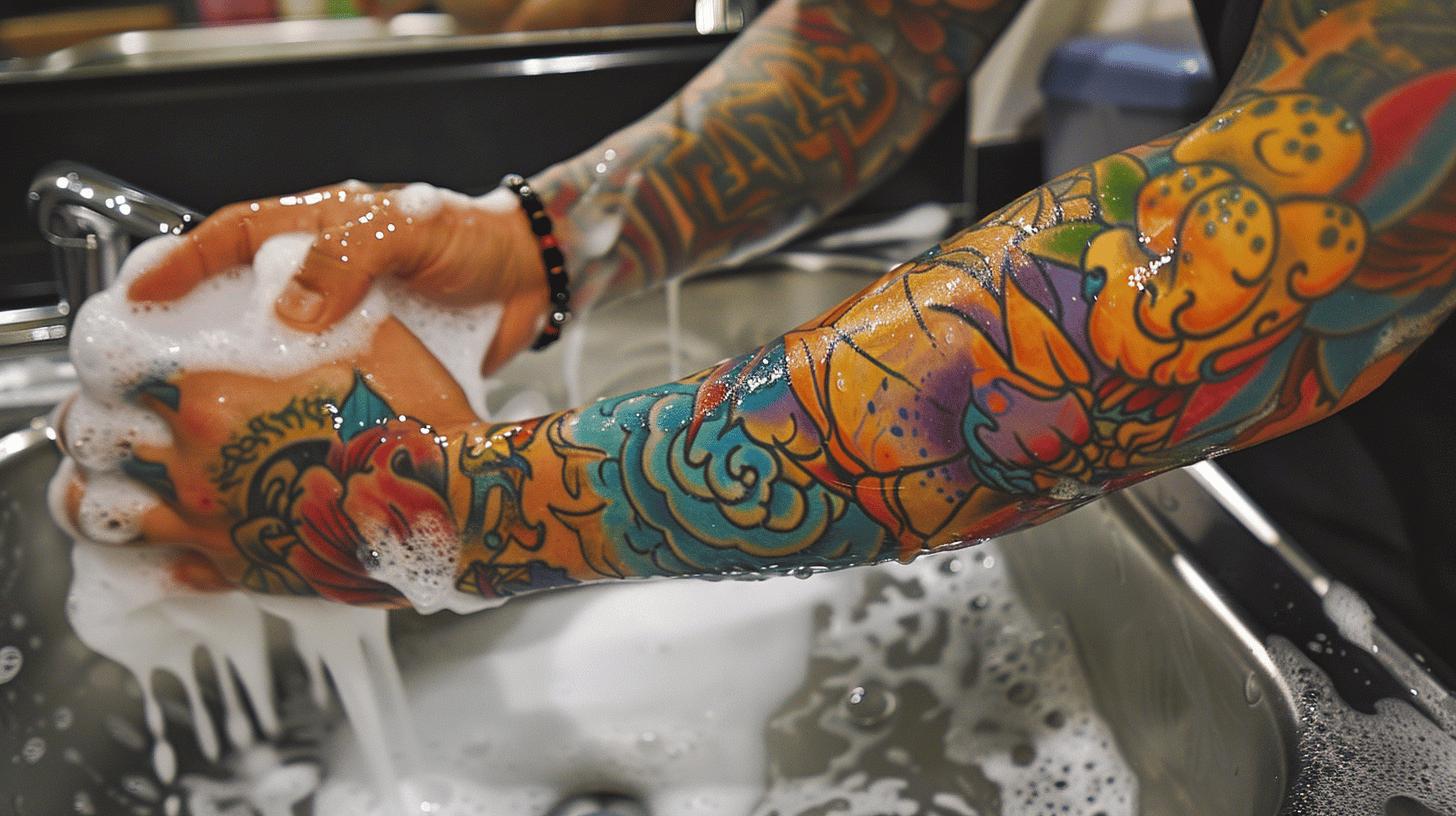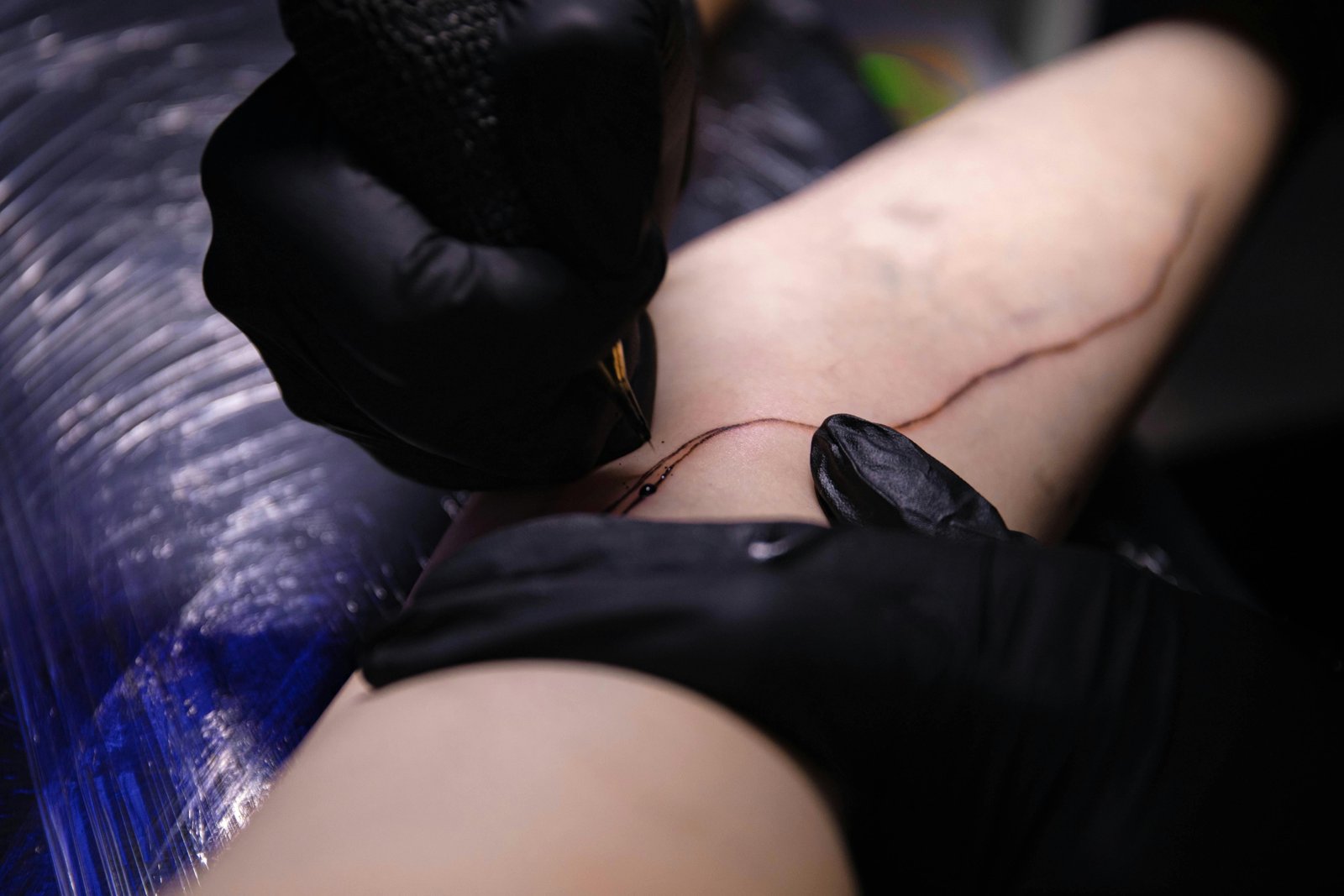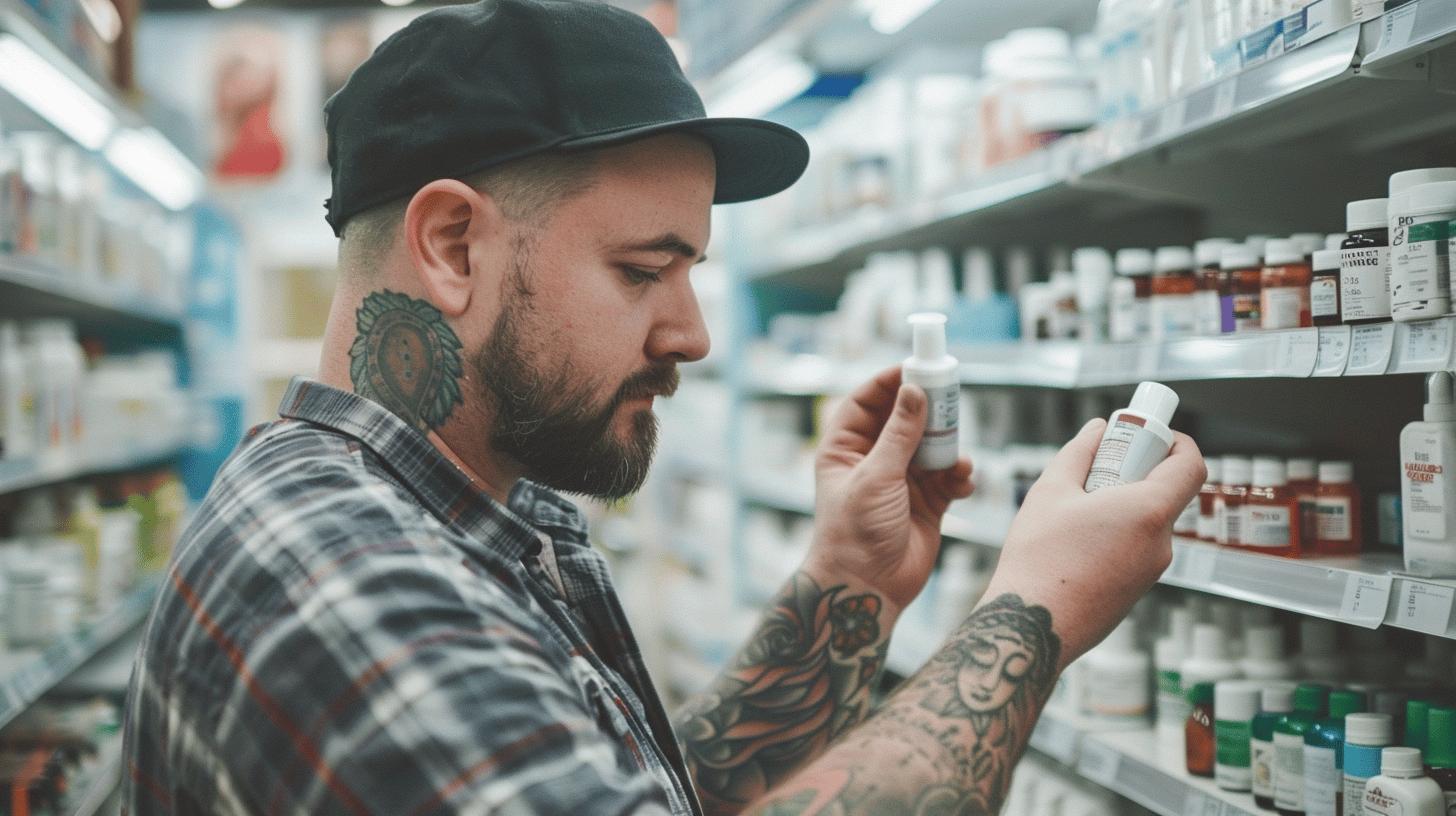Can I Safely Use Numbing Cream Before Getting a Tattoo? What Tattoo Artists Want You to Know
Thinking about getting a tattoo but dreading the pain? You’re not alone. One of the most common questions asked before a tattoo session is, “Can I use numbing cream before a tattoo?” Many people are curious whether using numbing cream before tattoo appointments is safe, effective, or even approved by their tattoo artist. In this guide, we’ll break down everything you need to know about applying numbing cream before you get a tattoo, when it’s a smart choice, and how it might affect your tattoo session. Let’s clear up the confusion and help you step into your next tattoo session with confidence.
Can I Use Numbing Cream Before a Tattoo? Everything You Need to Know
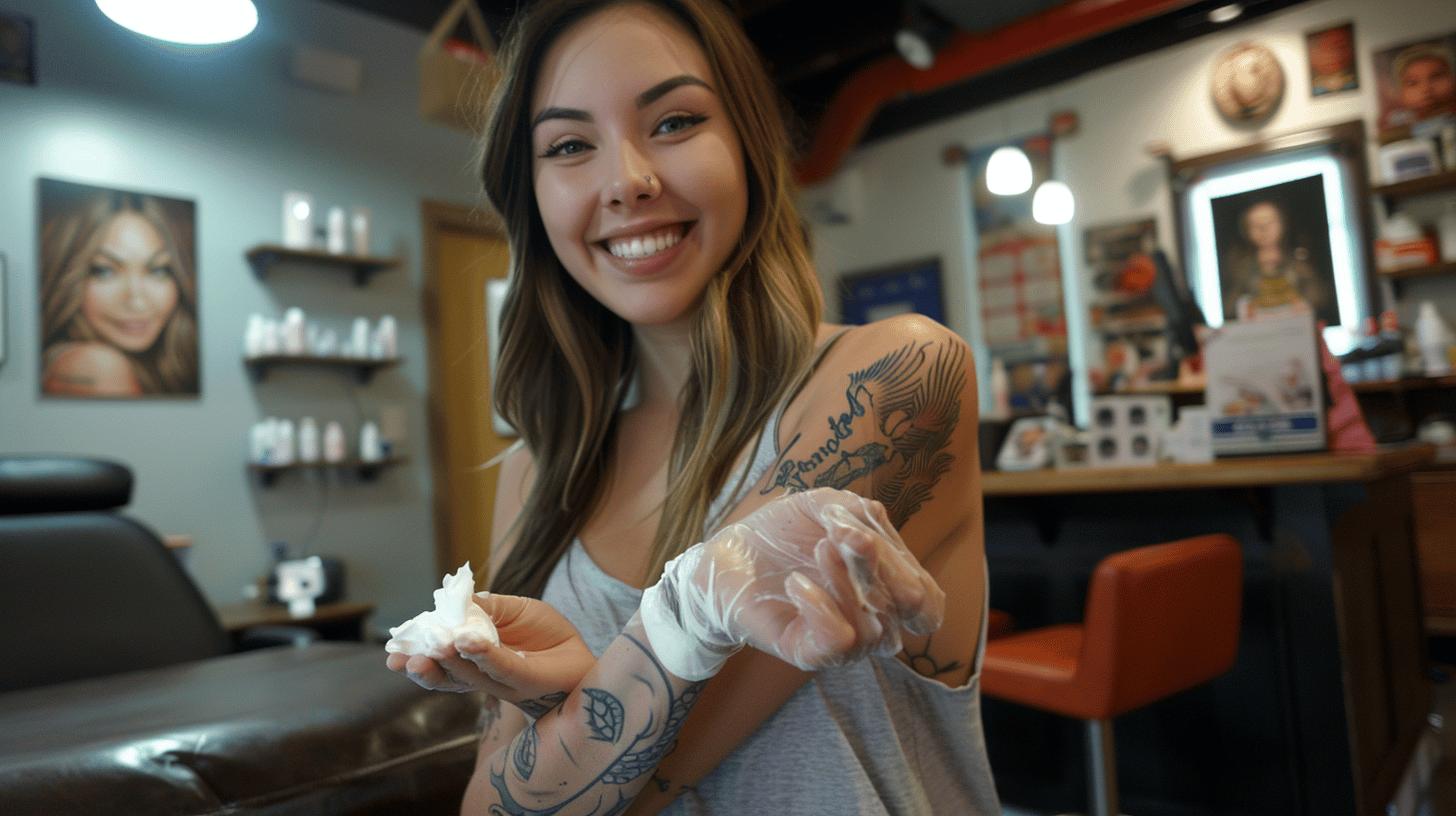
Can I use numbing cream before a tattoo?
Yes, you can use numbing cream before a tattoo. Numbing creams contain a local anesthetic like lidocaine, which temporarily blocks nerve signals in the skin, helping to reduce tattoo pain during your tattoo session.
Should I apply numbing cream before a tattoo?
If you have a low pain tolerance, are getting a tattoo on a sensitive area, or are nervous about the tattoo process, applying numbing cream before getting a tattoo can make the experience more manageable. Many artists support using numbing cream for tattoos if it is applied correctly.
Using numbing cream before tattooing involves covering the skin with a thick layer of cream about 30 to 60 minutes before your tattoo appointment. To activate the cream properly, the area should be wrapped in plastic wrap to help the skin absorb the numbing agent. This method allows maximum numbing and ensures the cream takes full effect.
The most effective numbing creams for tattoos usually contain topical lidocaine at a concentration of up to 5%. Products like Emla cream or Emla numbing cream are well-known options. Always apply the cream directly to the skin without rubbing it in too aggressively. You want to numb the area, not irritate it.
When using numbing cream before getting a tattoo, it’s important to wipe off the excess cream just before the tattoo artist starts working. Leaving it on during the tattoo session can affect the ink flow and interfere with the tattoo process.
If you’re getting a new tattoo soon and want to use tattoo numbing cream, ask your tattoo artist first. Some tattoo artists use numbing cream themselves, while others prefer working without it. Communicating early helps set clear expectations for your tattoo experience.
How Does Numbing Cream Work for Tattoos?
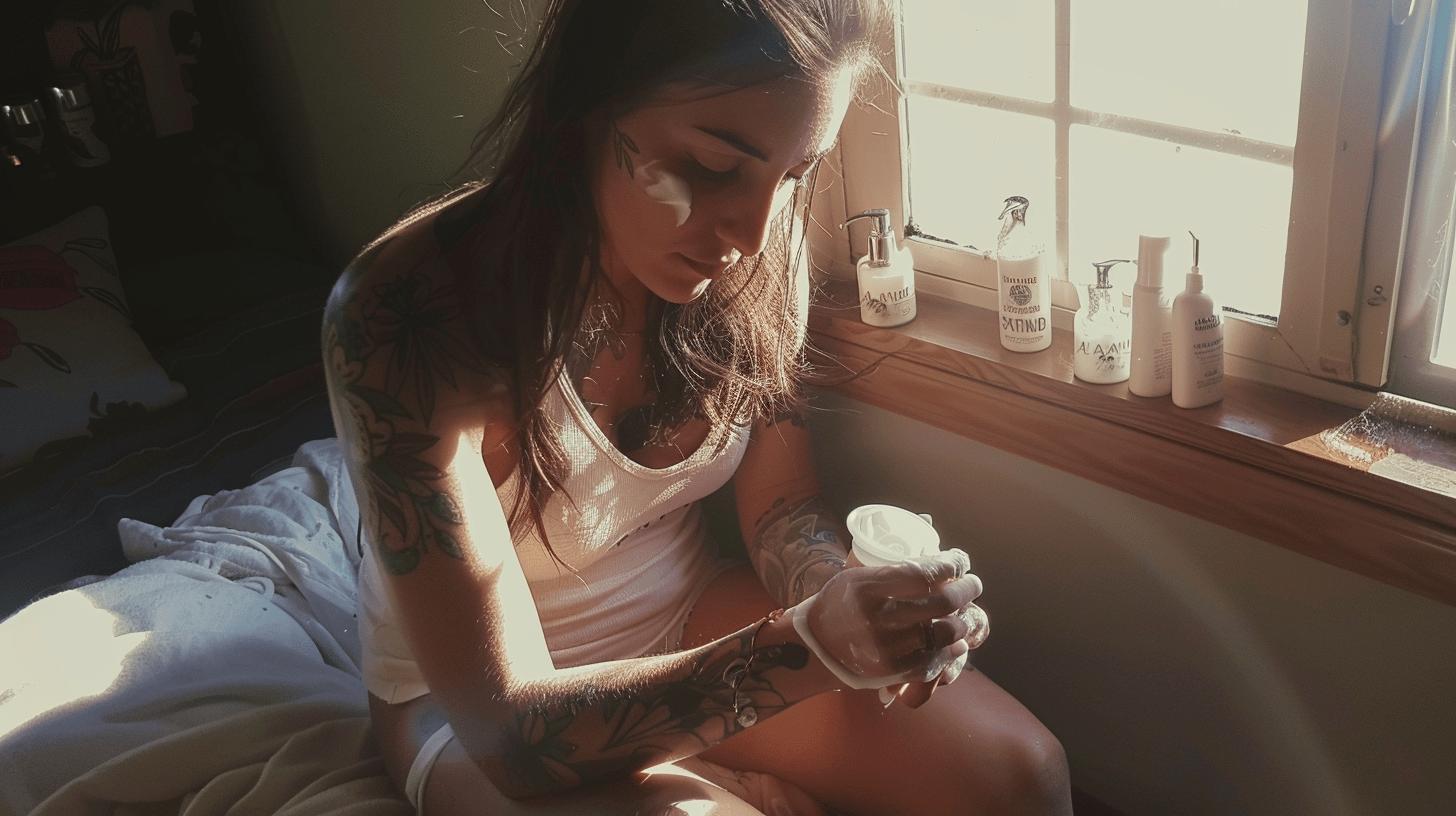
Does tattoo numbing cream work?
Yes, tattoo numbing cream works by temporarily blocking nerve signals in the skin. It contains a local anesthetic like lidocaine, which dulls the pain during the tattoo process without completely eliminating sensation.
When you apply the cream before getting a tattoo, the numbing agent absorbs into the skin and interrupts the pain signals that would normally travel to your brain. This allows the tattoo artist to work with you experiencing much less discomfort, particularly helpful for sensitive areas or large tattoos.
How does numbing cream help with tattoos?
Numbing cream helps by reducing the pain you feel during a tattoo session. When a thick layer of cream is applied directly to the skin and covered with plastic wrap, it activates the anesthetic properties. After 30 to 60 minutes, maximum numbing takes effect, lasting between 2 to 4 hours, and sometimes up to 5 hours depending on the product.
Using numbing cream for tattoos can make your tattoo experience smoother, allowing you to sit longer without needing frequent breaks. Some creams like Emla cream or Emla numbing cream also contain ingredients such as aloe vera or vitamin E to protect and soothe the skin during the tattoo process.
What does tattoo numbing cream do?
Tattoo numbing cream creates a numbing sensation in the area where it’s applied. It doesn’t eliminate pain completely but makes the process significantly less painful. This can be especially useful if you’re getting a new tattoo in a sensitive spot or if you want to numb your skin for a longer session.
Tattoo artists use numbing cream carefully to balance client comfort without affecting how the ink settles. Always ask your tattoo artist if you want to use numbing cream before your tattoo appointment to make sure it fits into their workflow.
Is It Safe to Use Numbing Cream Before Getting Tattooed?

Is it safe to use numbing cream for tattoos?
Yes, it is safe to use numbing cream for tattoos when the cream is used correctly and as directed.
Lidocaine-based numbing creams are the most common and safest option for skin before a tattoo. These creams are topical anesthetics applied directly to the skin, designed to numb the area and reduce tattoo pain without interfering with the tattoo process when used properly. Choosing a safe tattoo numbing cream for skin, such as fragrance-free and tattoo-specific products, is crucial.
Before your tattoo appointment, always do a small patch test with the numbing cream at least 24 hours in advance. This helps check for potential allergic reactions or irritation. Safe numbing cream use starts with making sure your skin reacts well before you apply a thick layer before getting a tattoo.
What are the possible side effects of numbing cream?
Possible side effects of numbing cream include:
- Mild redness or irritation where the cream is applied
- Temporary changes in skin texture
- Allergic reactions like itching or swelling
- Rarely, dizziness or nausea if too much lidocaine is absorbed
Always follow the instructions on how to apply the cream, using gloves if needed, and covering the area with plastic wrap to allow the numbing agent to absorb into the skin properly. Never rub it in thoroughly; instead, apply a thick layer and let it sit to activate the cream for maximum numbing.
Using numbing cream before getting tattooed can make your tattoo experience less painful, but it’s smart to ask your tattoo artist if they are comfortable with it. Some artists may have preferences about whether or not to work for tattoos where numbing cream has been applied.
Pros and Cons of Using Numbing Cream Before a Tattoo
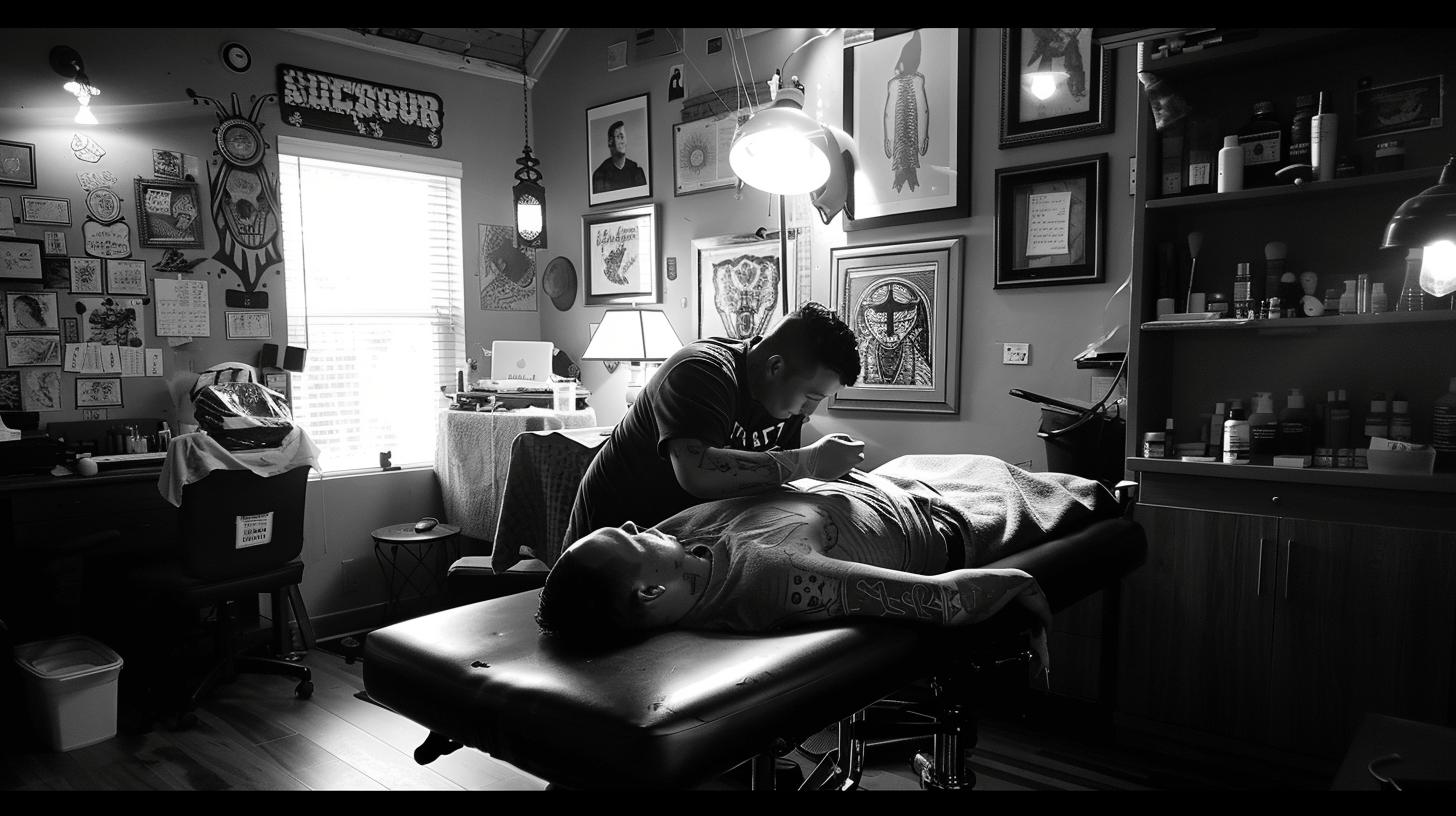
What are the pros and cons of tattoo numbing cream?
Tattoo numbing cream offers several benefits but also carries some drawbacks depending on how and when it is used.
Pros of using numbing cream before getting a tattoo:
- Reduces tattoo pain:
A good tattoo numbing cream with topical lidocaine can significantly reduce tattoo pain by numbing the area where the cream is applied. - Allows longer tattoo sessions:
By helping to numb your skin, you can sit for longer periods during a tattoo session, which is particularly useful for large tattoos or sensitive areas of your body. - Less trauma to the skin:
A relaxed client moves less, which means the tattoo artist can work more precisely, reducing unnecessary trauma to the skin before a tattoo. - Better tattoo experience overall:
When you use numbing cream correctly—apply a thick layer, cover it with plastic wrap, and leave yourself enough time for it to take effect—you’re likely to have a smoother tattoo experience.Cons of using numbing cream before getting a tattoo:
- Possible skin irritation:
Some people experience redness, swelling, or itching after using numbing cream for tattoos, especially if the product contains fragrances or is not tattoo-specific. - Reduced control for the tattoo artist:
Tattoo artists use numbing cream cautiously because the skin texture can change slightly, making it harder to judge how the ink is settling into the skin. - Pain returns mid-session:
Numbing cream effectiveness for tattoos usually lasts 2–4 hours. If the numbness starts to wear off during a long session, the sudden return of sensation can feel more intense. - Not all artists prefer it:
Some artists like working without numbing cream because they feel it helps them better monitor the client’s natural skin reactions during the tattoo process.
Using a numbing cream before getting a tattoo can make the process less painful and more comfortable, but it’s always best to ask your tattoo artist beforehand. Some artists may recommend specific products like Emla cream or prefer you don’t rub it in thoroughly to maintain maximum numbing. Always apply the cream properly, using gloves if needed, and wipe off the excess before the tattoo appointment begins.
Will Numbing Cream Impact Tattoo Quality or Healing?

Will numbing cream impact tattoo quality?
Yes, numbing cream may impact tattoo quality if not used correctly.
When you use numbing cream for tattoos, it can slightly alter the texture of the skin. A thick layer of numbing cream applied directly to the skin before a tattoo appointment can cause the skin to feel a bit rubbery or swollen. This change can affect how the ink settles during the tattoo process, leading to minor issues with ink saturation or precision. Some tattoo artists use numbing cream cautiously because it can make it harder to judge how the skin is reacting under the needle.
Artists like to read the skin during a tattoo session—watching for signs like redness and swelling—to adjust their technique. Numbing creams, especially those with topical lidocaine, can mask these natural reactions, making it a little trickier for the tattoo artist to achieve perfect detail.
How does numbing cream influence tattoo healing?
Using numbing cream before getting a tattoo can actually help healing if the tattoo session runs smoother.
When you numb the area properly, you tend to move and flinch less. Less movement reduces trauma to the skin before a tattoo, which can lead to a faster and cleaner healing process. However, if the numbing agent is left on too long, or if the cream is applied incorrectly by rubbing it in thoroughly instead of letting it absorb into the skin, it could cause irritation. This irritation might lengthen healing time or cause minor complications.
Can numbing cream affect tattoo detail?
Yes, numbing cream can affect tattoo detail if the skin texture changes too much.
When the skin numbing effect is too strong, it can make the skin feel artificially tight or overly soft. This shift can make fine lines less crisp and details slightly blurrier, especially in a new tattoo where precision is everything. Artists prefer working on natural-feeling skin because it offers predictable resistance to the needle, helping them create a cleaner final result.
If you want to use tattoo numbing cream, always ask your artist beforehand. Some tattoo artists use numbing cream themselves and know how to adjust their technique, while others prefer working without numbing cream to avoid any impact on the tattoo quality.
Tattoo Artists’ Opinions on Using Numbing Cream
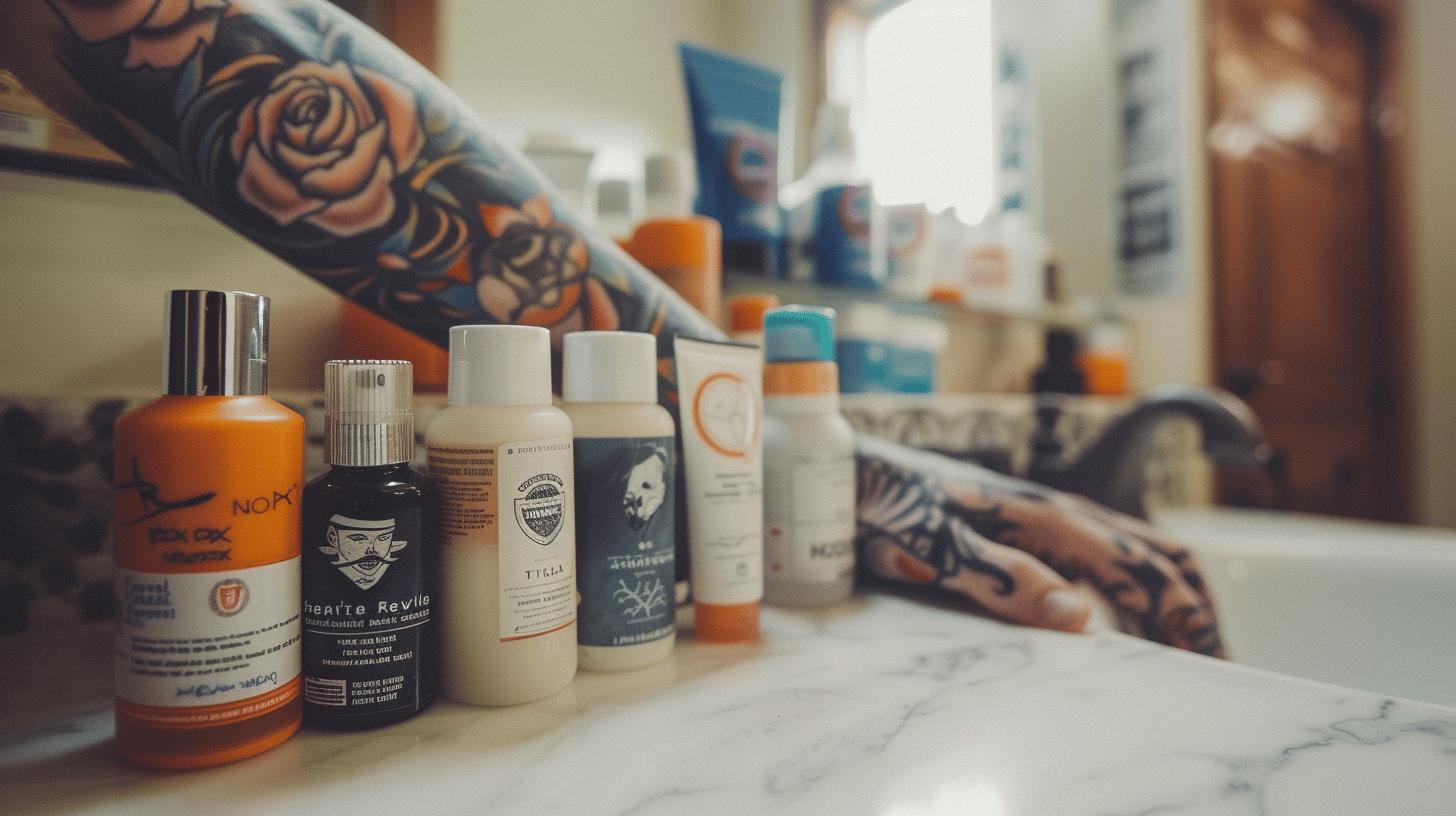
Can tattoo artists use numbing cream?
Yes, tattoo artists can use numbing cream if they choose to, but opinions vary widely across the tattoo community.
Some tattoo artists use numbing cream regularly, especially when working on large tattoos or sensitive areas of the body. They find that applying a thick layer of a topical numbing agent like lidocaine helps reduce tattoo pain and makes the tattoo process smoother for clients. When numbing cream is applied directly to the skin and wrapped with plastic wrap, it allows enough time for the anesthetic to take effect, leading to a more comfortable tattoo session.
Other tattoo artists prefer working without numbing cream. They argue that a natural skin texture is essential for the best ink application. Artists like Matt have mentioned that using numbing cream before getting a tattoo can make the skin feel rubbery or swollen, which can interfere with how the ink settles. This is why some artists avoid using any topical numbing creams unless absolutely necessary.
Do tattooists recommend numbing cream?
Tattooists’ recommendations depend on their techniques and the client’s needs.
- Some artists recommend using numbing cream for tattoos if you are getting a new tattoo on a particularly painful area or if you have a low pain threshold.
- Others may discourage it during the tattoo appointment because the numbness starts to wear off mid-session, which can cause a sudden spike in discomfort.
Tattoo artist numbing cream opinions are often based on personal experience and tradition. Tattoos have been around for centuries without topical numbing, so some artists see enduring the pain as part of the process. Still, many artists understand that using numbing can make your tattoo experience less painful and are open to it if you ask your artist beforehand.
Communication is key. If you want to use tattoo numbing cream before your next tattoo, make sure to check with your tattoo shop early, giving yourself and your artist enough time to plan and apply the cream properly.
Best Numbing Creams for Tattoos: Top Picks and Reviews
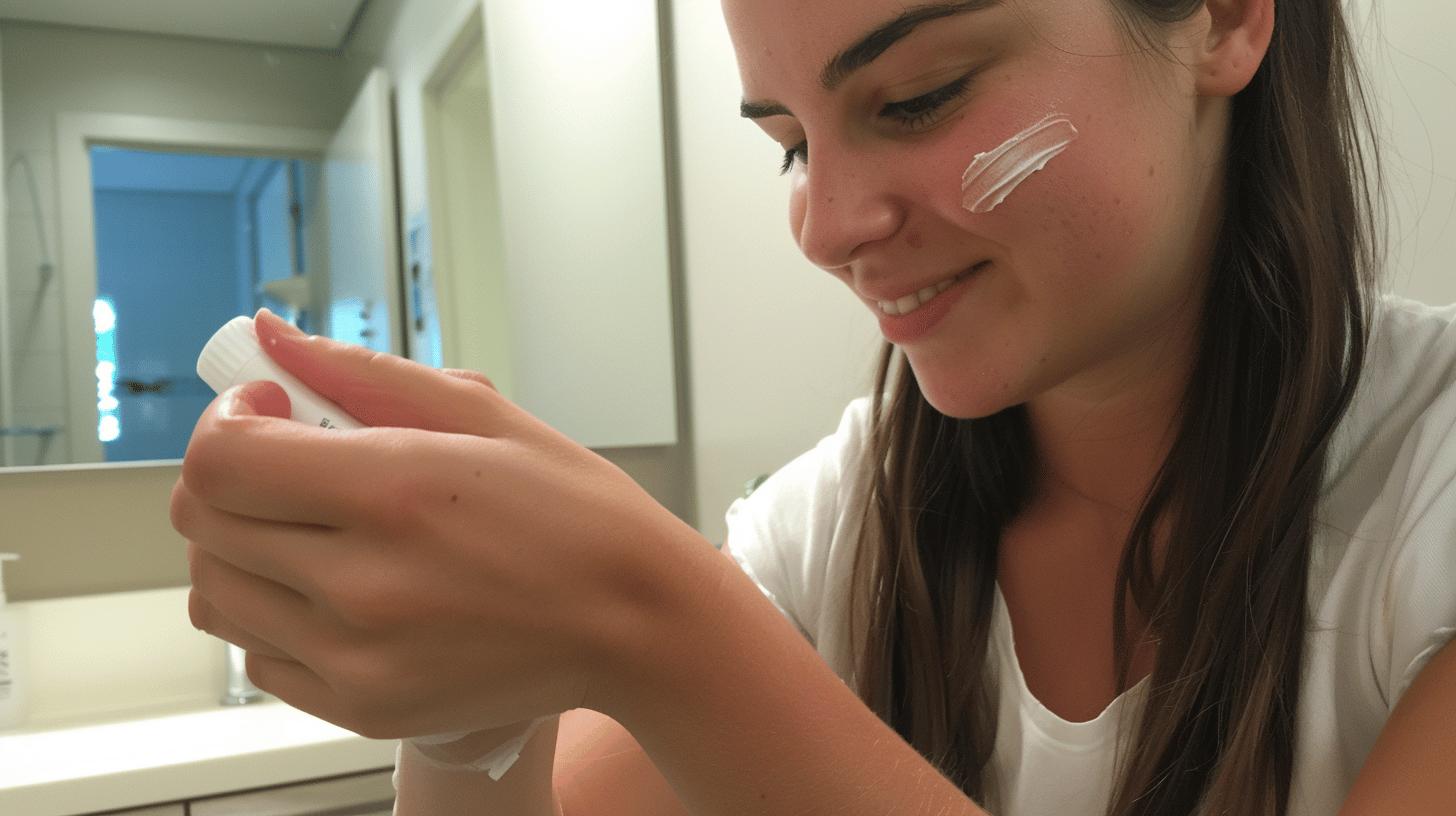
What is the best numbing cream for tattoos?
The best numbing cream for tattoos is one that uses topical lidocaine, absorbs into the skin effectively, and maintains a strong numbing effect without irritating the skin before a tattoo.
Choosing the right numbing cream can make your tattoo experience much less painful, especially when you apply a thick layer and give it enough time to take effect before your tattoo appointment. Many artists prefer when clients use numbing creams properly because it can reduce the pain and make the tattoo process smoother.
Topical numbing creams are applied directly to the skin before getting tattooed, and the best ones balance strong anesthetic properties with skin-soothing ingredients to protect the area during the tattoo session.
Here are the best numbing creams for tattoos based on tattoo numbing cream reviews:
- Mad Rabbit Relieve Numbing Cream
Contains 5% topical lidocaine and soothing plant extracts. Offers a strong numbing effect lasting up to 4 hours. Ideal for large tattoos or sensitive areas. - HUSH Tattoo Numbing Gel
Infused with lidocaine, aloe vera, and green tea extracts. Designed for tattoo artists who want to use numbing cream without affecting the ink quality. - TKTX Numbing Cream
Available in various strengths and colours. Contains 5% lidocaine and is a popular choice for clients who want to numb the area for needle and laser procedures. - Emla Cream
A well-known topical anesthetic used for skin numbing before tattoos. Emla numbing cream needs at least 1 hour to take effect and is widely available without prescription from your local pharmacy. - Dr. Numb Topical Anesthetic Cream
A strong contender for the strongest numbing cream for tattoos. Works well for laser tattoo removal and large tattoo sessions requiring maximum numbing.Product Key Features Mad Rabbit Relieve 5% lidocaine, plant extracts, 4-hour numbing HUSH Gel Topical lidocaine, aloe vera, skin protection TKTX Cream Multiple strengths, 5% lidocaine Emla Cream Classic lidocaine and prilocaine mix Dr. Numb Strong topical anesthetic, long-lasting effect Using numbing cream before getting a tattoo can make the process less painful, but always ask your tattoo artist first to make sure it fits into the tattoo process. Apply the cream properly, cover it with plastic wrap, and leave yourself enough time for it to activate fully before your next tattoo.
How to Apply Numbing Cream Properly Before a Tattoo
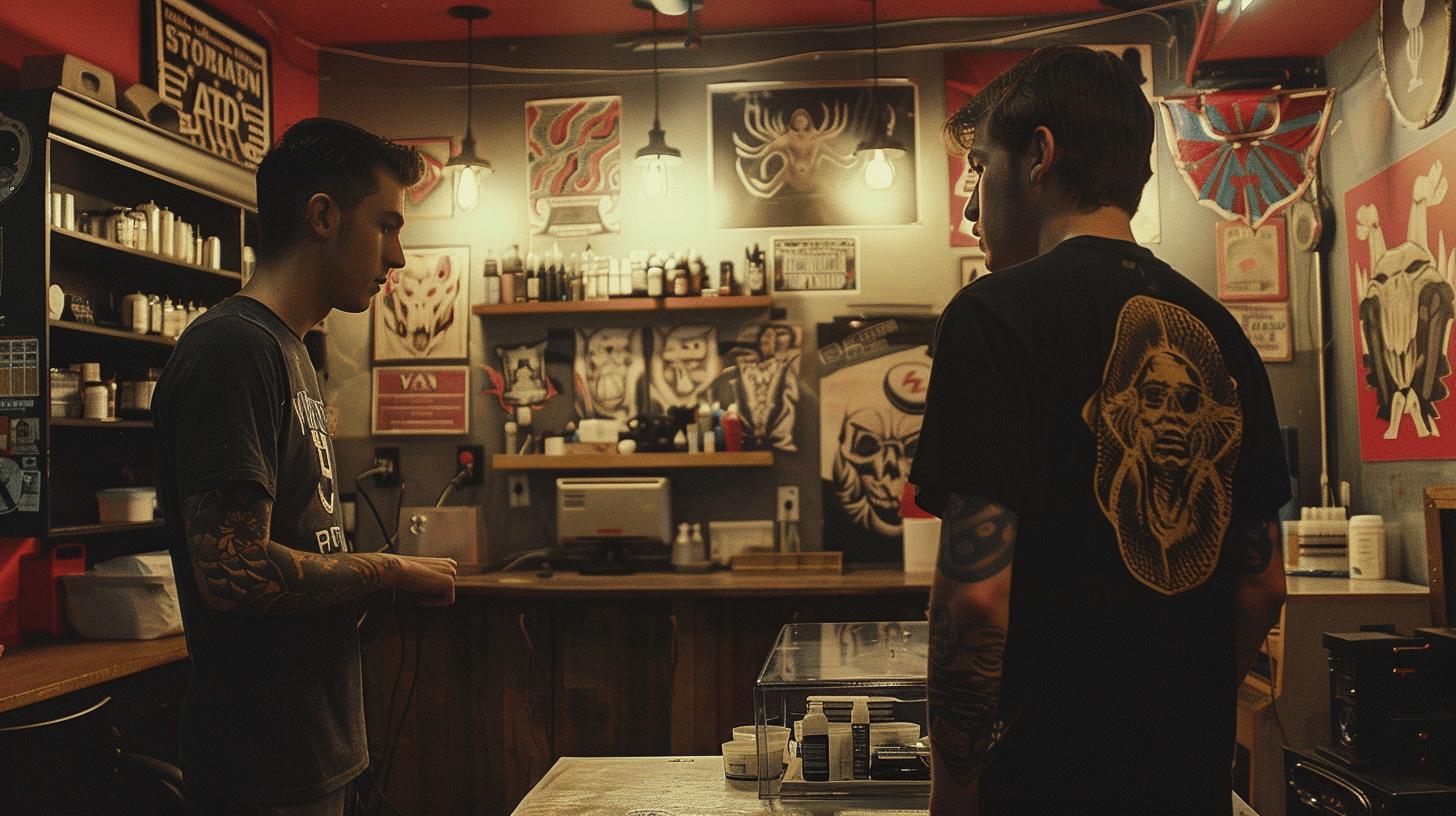
How to apply numbing cream for tattoo?
To apply numbing cream for tattoos properly, follow a precise step-by-step method to achieve maximum numbing and reduce tattoo pain effectively.
Correctly using numbing cream before getting a tattoo is vital if you want the numbing effect to last throughout your tattoo session. A thick layer of cream needs to be applied directly to the skin, and you should leave yourself enough time to allow the anesthetic to absorb fully.
Here’s exactly how to apply the cream:
- Clean the skin thoroughly
Wash the area where you’re getting a tattoo with antibacterial soap and warm water. Pat it dry completely before applying the numbing agent. Skin must be clean for the topical lidocaine to absorb properly. - Apply a thick layer of cream
Apply a thick layer of numbing cream directly to the skin. Cover slightly more than the tattoo area to make sure the entire spot is numbed. Don’t rub it in thoroughly; you want the numbing cream to sit on the surface to activate the cream properly. - Cover the area with plastic wrap
After you apply a thick layer, seal it with plastic wrap (cling film). This traps heat and moisture, helping the lidocaine absorb into the skin faster and more effectively. - Wait 60–90 minutes
Leave the numbing cream applied under the plastic wrap for at least 60 minutes. Waiting 90 minutes can deliver stronger numbing, especially for large tattoos or sensitive areas of your body. The cream needs enough time to take effect. - Remove the wrap and wipe off the excess
Just before your tattoo appointment starts, remove the plastic wrap and gently wipe off the excess numbing cream. This prevents the cream from mixing with the ink during the tattoo process. - Inform your tattoo artist
Always tell your tattoo artist that you’ve used numbing cream. Artists like to know if the skin has been numbed because it can slightly change how the skin reacts during the tattoo session.
Correct use of a topical numbing cream like Emla cream or Emla numbing cream can make your tattoo experience much less painful. If you want to use numbing cream for tattoos, make sure to check with your tattoo shop ahead of time so they can plan accordingly. Applying numbing cream properly is part of the process to make your tattoo smoother and more comfortable.
Common Mistakes to Avoid When Using Tattoo Numbing Cream
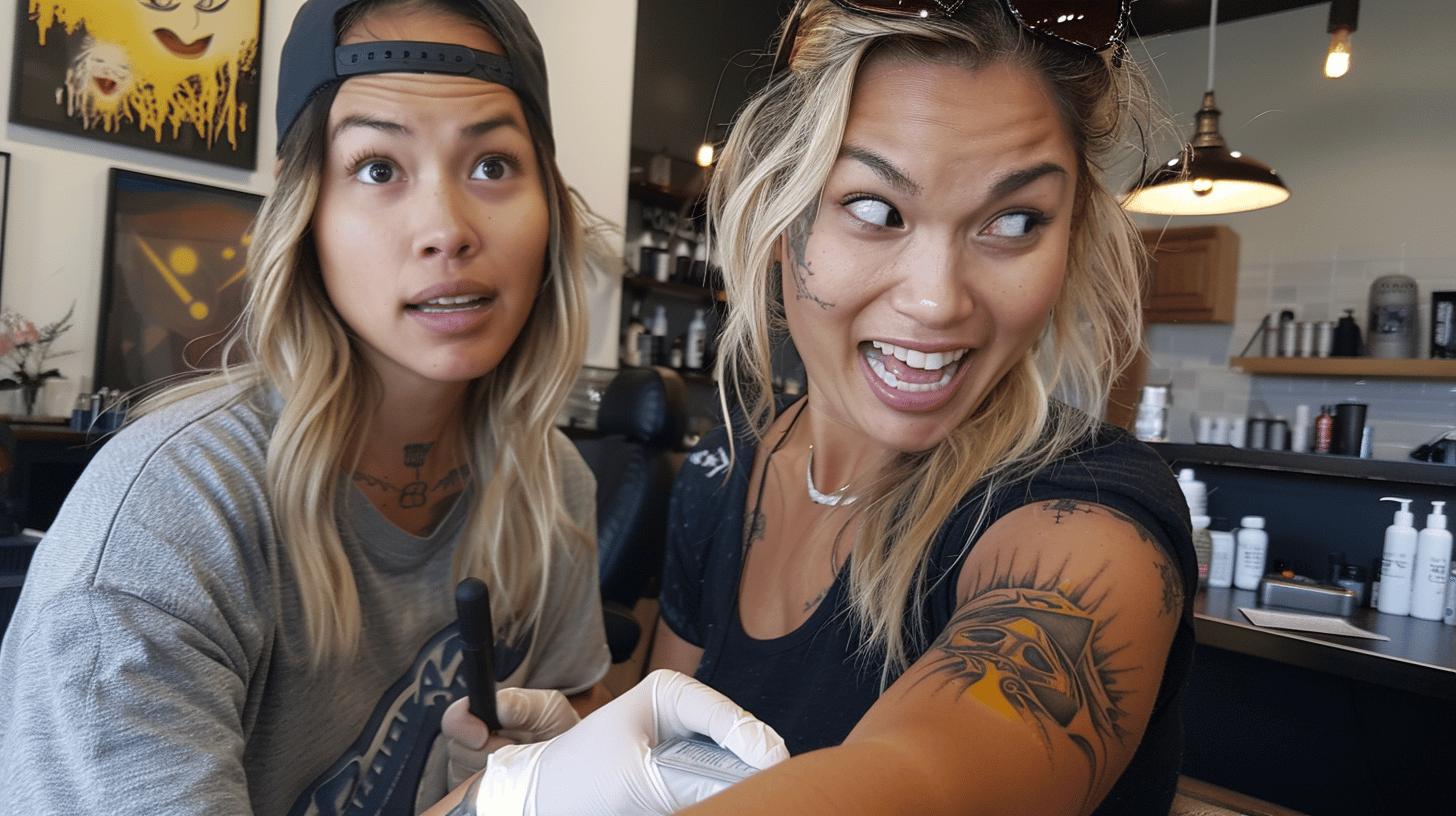
When not to use numbing cream?
Avoid using numbing cream if you have a known allergy to lidocaine or other anesthetic ingredients, if your skin is broken or irritated, or if your tattoo artist advises against it for your specific tattoo process.
Even though using numbing cream for tattoos can make your tattoo session less painful, using it incorrectly can cause problems during your tattoo appointment. Here are common mistakes to avoid when you want to use tattoo numbing cream:
- Applying too little cream
A thin layer will not produce the maximum numbing effect. You must apply a thick layer of cream before getting a tattoo to properly numb the area and reduce tattoo pain. - Not covering the area with plastic wrap
After you apply the cream, wrapping it with cling film is crucial. Covering the area traps heat and moisture, helping the topical lidocaine absorb into the skin before a tattoo and activate the cream properly. - Removing the cream too soon
Numbing cream needs at least 1 hour to take effect. Removing it too early can mean the anesthetic hasn’t fully numbed your skin, making the tattoo experience unnecessarily painful. - Layering numbing cream before tattoo excessively
Over-applying or layering numbing cream before a tattoo without following correct timing can damage the skin before a tattoo. Too much lidocaine applied directly to the skin can cause irritation or affect the ink during your tattoo session. - Not informing your tattoo artist
Always ask your tattoo artist if you want to use numbing cream. Tattoo artists use numbing cream differently, and artists prefer knowing if the skin has been numbed to adjust their technique during the tattoo process.
If you’re getting a new tattoo and want to numb your skin properly, apply a thick layer, wrap it with plastic, and leave yourself enough time for the anesthetic to work for tattoos. Done right, the numbing sensation can make your tattoo experience much less painful without affecting the final ink quality.
Where to Buy the Best Tattoo Numbing Cream in the UK
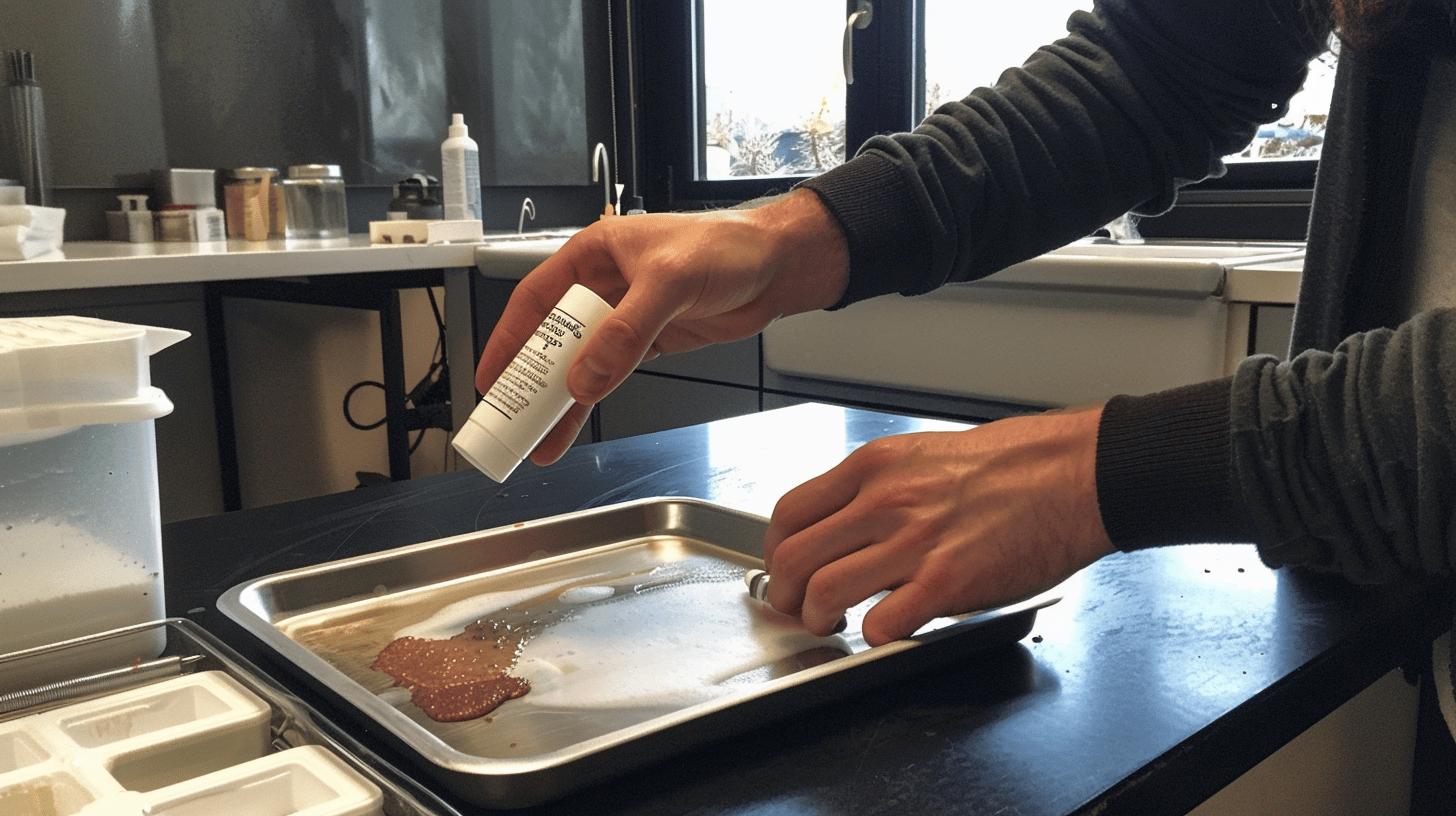
Where can you buy tattoo numbing cream in the UK?
You can buy tattoo numbing cream in the UK from trusted retailers like Boots, Amazon, and Superdrug.
Buying numbing cream for tattoos from reliable sources is part of the process to make your tattoo experience safer and more comfortable. Products like TKTX and Emla cream are widely available in the UK and are often recommended by those who want to numb the area before getting tattooed.
When you’re getting a tattoo, you want to use numbing cream that contains topical lidocaine. Always make sure to check the lidocaine percentage—up to 5% is allowed over the counter without a prescription from your local pharmacy. Choosing a tattoo-specific cream ensures the numbing agent is strong enough to reduce tattoo pain without causing issues during the tattoo session.
Where can you find numbing cream for tattoos at Boots?
Boots carries options like Emla cream and other topical anesthetic products suitable for numbing skin before a tattoo. You can visit a Boots store or order online to get a tattoo numbing cream that’s applied directly to the skin.
Is numbing cream for tattoos on Amazon reliable?
Amazon offers a wide range of tattoo numbing creams, including TKTX and other brands. Always read customer reviews carefully to find a cream that provides a strong numbing effect and fits your tattoo process needs.
Can you buy tattoo numbing cream at Superdrug?
Yes, Superdrug stocks numbing creams suitable for tattoos. Look for products that use lidocaine and are designed for skin numbing to make your tattoo less painful.
| Retailer | Available Products |
|---|---|
| Boots | Emla cream, topical anesthetics |
| Amazon | TKTX, Emla, other numbing creams |
| Superdrug | Skin numbing creams with lidocaine |
When you want to use numbing cream before getting a tattoo, buying from trusted shops helps guarantee the quality and effectiveness of the product. Always apply a thick layer and give the cream enough time to take effect before your next tattoo session.
FAQs About Using Numbing Cream Before a Tattoo
Can I use lidocaine cream before tattoo?
Yes, you can use lidocaine cream before a tattoo.
Lidocaine is a local anesthetic that temporarily blocks nerve signals in your skin. When you apply the cream before getting a tattoo, it helps numb the area and reduce tattoo pain during the tattoo session. Always use a numbing cream for tattoos that contains topical lidocaine and is applied directly to the skin. Make sure to apply a thick layer and cover it with plastic wrap to activate the cream and allow enough time for maximum numbing before your tattoo appointment.
Can I use Dr Numb before tattoo?
Yes, you can use Dr Numb before a tattoo.
Dr Numb is a topical numbing cream with lidocaine, designed to numb your skin before needle and laser procedures like tattooing. To make your tattoo less painful, apply a thick layer of Dr Numb directly to the skin, cover it with cling film, and wait at least 1 hour for it to take effect. Always wipe off the excess cream before your tattoo artist starts the tattoo process to avoid any interference with the ink.
Does numbing cream reduce pain during tattoo?
Yes, numbing cream can significantly reduce pain during a tattoo session.
When a numbing cream is applied correctly, it creates a numbing sensation by blocking pain signals. Tattoo numbing cream does not eliminate pain entirely but can make the process much more manageable. Using numbing cream before getting tattooed, especially for large tattoos or sensitive areas of your body, can help you sit longer and more comfortably.
What about tattoo aftercare with numbing cream?
Tattoo aftercare with numbing cream use is mostly the same as standard aftercare.
Once the tattoo session is over, follow your artist’s advice closely. Numbing creams are used before tattooing and generally do not affect healing if the skin was properly cleaned and the cream was wiped off before tattooing. You should still clean your new tattoo gently with mild soap and water, apply a thin layer of healing ointment, and avoid rubbing or scratching the area. Always make sure to check with your tattoo artist if you have any concerns about aftercare following the use of a topical numbing cream.
Final Words
Applying numbing cream before getting tattooed can change the whole experience, making it more comfortable for new tattoo clients or those with sensitive skin.
We explored how numbing cream for tattoos works, how to apply it properly, and when it’s safest to use.
Many artists may support the use of tattoo numbing cream, while others prefer to tattoo without it, so clear communication is key.
Choosing the right product helps to reduce tattoo pain without risking the ink quality.
If you want to use numbing cream or are planning your next tattoo, understanding how to numb your skin safely can set you up for a smoother session.
Getting a tattoo is a commitment to your skin – using something like numbing cream before getting inked can make it a lot more manageable.
FAQ
Can I use numbing cream before a tattoo?
Numbing cream for tattoos can be used before a tattoo session to help numb your skin and reduce tattoo pain. Apply the cream directly to the skin about 1 hour before your tattoo appointment for best results.
Is it okay to use numbing cream before getting tattooed?
Yes, using numbing cream before getting tattooed is common to make your tattoo less painful. Many artists allow it if the client applies a thick layer properly and informs them before the tattoo session begins.
How long before a tattoo should I apply numbing cream?
You should apply a thick layer of numbing cream about 60 to 90 minutes before getting tattooed. Cover it with plastic wrap to allow the maximum numbing effect to absorb into the skin before a tattoo.
Why don’t tattoo artists use numbing cream?
Many tattoo artists prefer not to use numbing cream because it can change the skin texture and affect how the ink enters during the tattoo process. Some artists may also believe pain is part of the tattoo experience.
What can I use to numb your skin before a tattoo without numbing cream?
If you want to numb your skin without numbing cream, deep breathing, meditation, and keeping hydrated before a tattoo are natural methods. Painkillers like ibuprofen can also help reduce tattoo discomfort.
Which is the strongest numbing cream for tattoos?
The strongest numbing cream for tattoos often contains 5% lidocaine, like TKTX or Dr. Numb. These topical anesthetic creams are applied directly to the skin before your tattoo appointment for better numbness.
How long does numbing cream usually last during a tattoo?
Numbing cream typically lasts about 2 to 4 hours during a tattoo session. However, the numbing sensation may start to wear off if your session runs long, especially during large tattoos.
What are the reviews like for Emla numbing cream for tattoos?
Emla numbing cream reviews often highlight effective pain relief for small to medium tattoos. It uses lidocaine as its main numbing agent and is popular for numbing skin before a tattoo when applied correctly.
Is TKTX numbing cream good for tattoos?
TKTX numbing cream for tattoos is widely used because it combines lidocaine and other ingredients for strong numbing. It is favoured for large tattoos and long sessions when maximum skin numbing is needed.
Do tattoo artists care if you use numbing cream?
Tattoo artists may care if you use numbing cream because it can influence how your skin reacts to ink. Always ask your tattoo artist beforehand if they are comfortable with you using a topical anesthetic.
Why is numbing cream not always recommended for tattoos?
Numbing cream may not be recommended because it can affect the tattoo process, like ink absorption and the way skin feels under the needle. Some artists believe using numbing creams can impact tattoo quality.
What should I take before a tattoo to ease the pain?
To ease tattoo pain naturally, stay hydrated, eat a good meal, and avoid alcohol. For extra help numbing the area, use lidocaine-based topical creams before getting a new tattoo, but always ask your artist first.
Can I use Dr. Numb before getting a tattoo?
Yes, you can use Dr. Numb before getting a tattoo. It is a popular lidocaine-based topical anesthetic that helps numb your skin and reduce pain when a thick layer is applied correctly under plastic wrap.
Will using numbing cream reduce pain during a tattoo?
Using a tattoo numbing cream significantly reduces tattoo pain during a session. Applying it properly before tattooing numbs the area, making your tattoo experience much more manageable, especially in sensitive spots.
Is tattoo aftercare different if you used numbing cream?
Tattoo aftercare with numbing cream is the same as usual. You will still need to clean gently, avoid harsh chemicals, and follow proper healing advice to help your ink settle and your skin heal properly.

